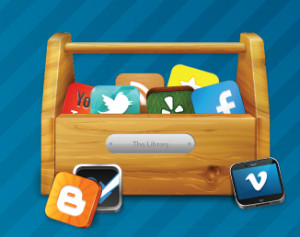
With this collection of books, we’re looking at ways technology—old and new—contributes to the management of libraries. In some cases, such as the card catalog, it answers a need and creates its own uses. In other cases, such as the cellphone, the technology was created for a different purpose but its adaptations transform library services in ways we are only beginning to harness.
******************************************
With our online catalogs, we think we’ve replaced the card catalog with technology. Paper Machines: About Cards & Catalogs, 1548–1929, translated by Peter Krapp from the German by Markus Krajewski, provides a history of the index in card form, documenting how for four centuries the physical card catalog was a technology. No, it did not originate with >Melvil Dewey, but rather centuries earlier. Shortly after the invention of movable type, when printed books proliferated, the bibliographers and librarians of the day sought to create a catalog—and started using movable paper scraps to create representations of the books and sequence them in a logical order. Others adopted the technology for tasks as diverse as conscription rolls, accounting records, and medical records. This isn’t an easy read, but the historical context, especially the descriptions of the implementation challenges—including the determination of the standard size for the catalog card (the subject of a spirited debate at an ALA conference), or the fact that we are still seeking a universal catalog— are informative.
Indexed. The MIT Press, 2011. 224 p. $30. 978-0-262-01589-9
Social media seems pervasive, but using it well requires management. In The Librarian’s Nitty-Gritty Guide to Social Media, Laura Solomon reviews the processes for implementing a social media presence, from advocating for its implementation to closing an account. Through mini-case studies and sample policies, Solomon reviews the strategies for success. She also includes some practical dos and don’ts, methods of measuring success, and managerial considerations, such as how to give a cohesive voice to the library’s social media initiative (see excerpt, p. 34–37).
Indexed. ALA Editions, 2012. 224 p. $52. PBK. 978-0-8389-1160-0
According to a recent Pew Internet & American Life Project study, 86% of Americans have a cellphone; more than half use it to search the internet and nearly three-quarters for text messaging. This pervasiveness has implications for services in all types of libraries. Using Mobile Technology to Deliver Library Services: A Handbook focuses on academic libraries, but its research on what library services students want delivered on their mobile devices should also inform public librarians. Author Andrew Walsh offers a guide to implementing the most desired services, including text messaging for short reference questions. Walsh also addresses mobile websites and implications of mobile searching in information literacy instruction.
Indexed. Scarecrow Press, 2012. 160 p. $80. PBK. 978-0-8108-8757-2
Implementing Virtual Reference Services: A LITA Guide, edited by Beth C. Thomsett-Scott, picks up where Walsh leaves off by describing several text-messaging reference services. Other essays and case studies present considerations for general virtual reference services and more specific issues with the use of chat services and Twitter for reference. One important essay, “Embedded Librarians Using Web 2.0 Services for Reference” by Ellen Hampton Filgo, connects virtual reference and embedded librarianship, showing how collaborations between an embedded librarian and a department or work group become greatly enhanced when virtual reference is the norm.
Indexed. ALA Neal-Schuman, 2013. 168 p. $70. PBK. 978-1-55570-899-3
In Disability and the Internet: Confronting a Digital Divide, information policy specialist Paul T. Jaeger explores the intersection of disability and information technology. This is an important work, as providing access to all goes beyond usability studies and adherence to Section 508 accessibility for web-based information and applications. Jaeger provides solidly researched background on the laws that should guide provision of internet services but also points out where accommodations fail to meet people’s needs—whether at work, school, or the library. After enumerating the barriers, he describes the evaluations that are needed and the policy reforms we should be seeking and advocating.
Indexed. Lynne Rienner Publishers, 2011. 225 p. $55. 978-1-58826-828-0


